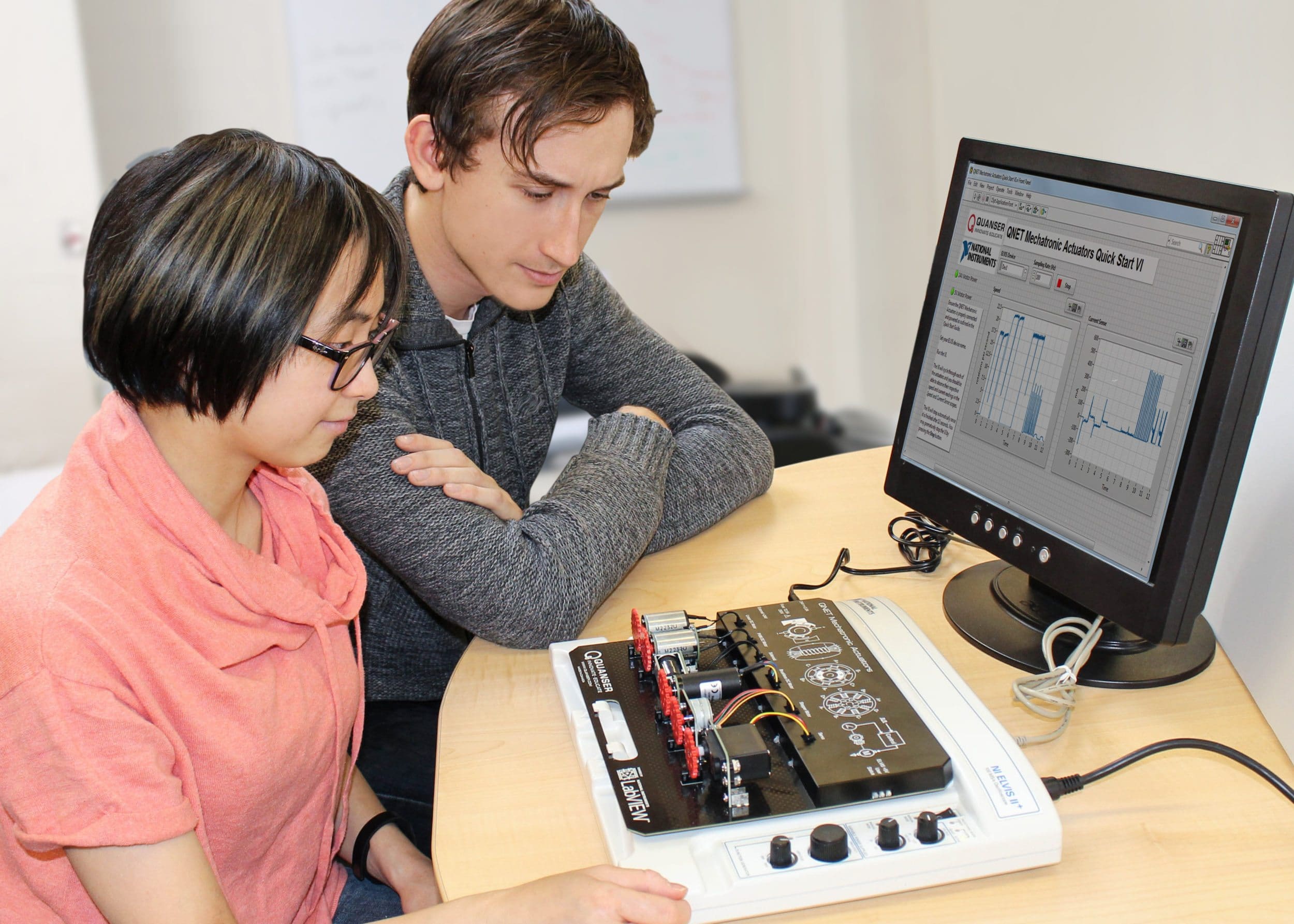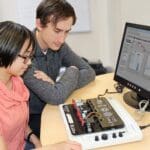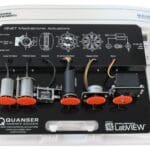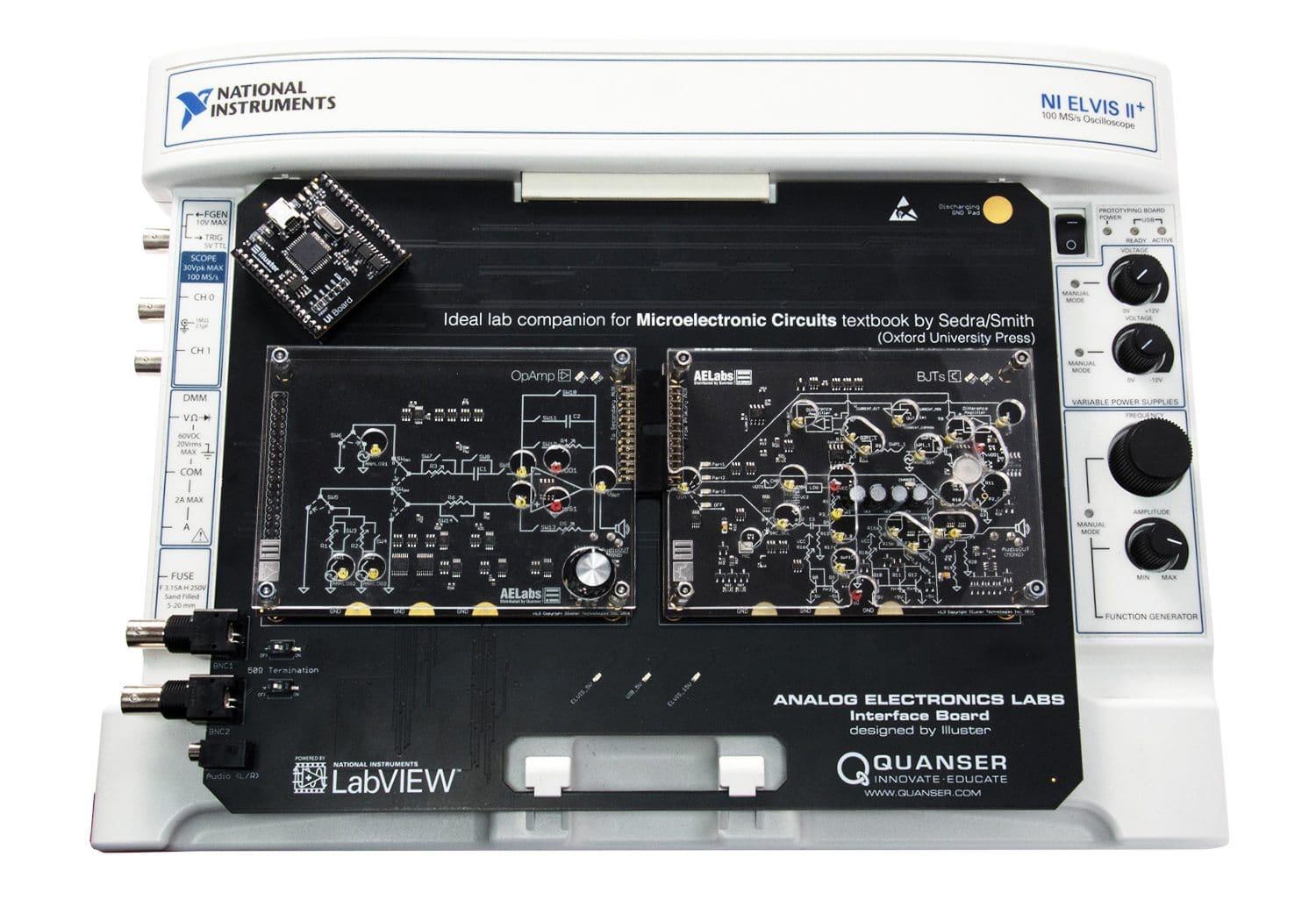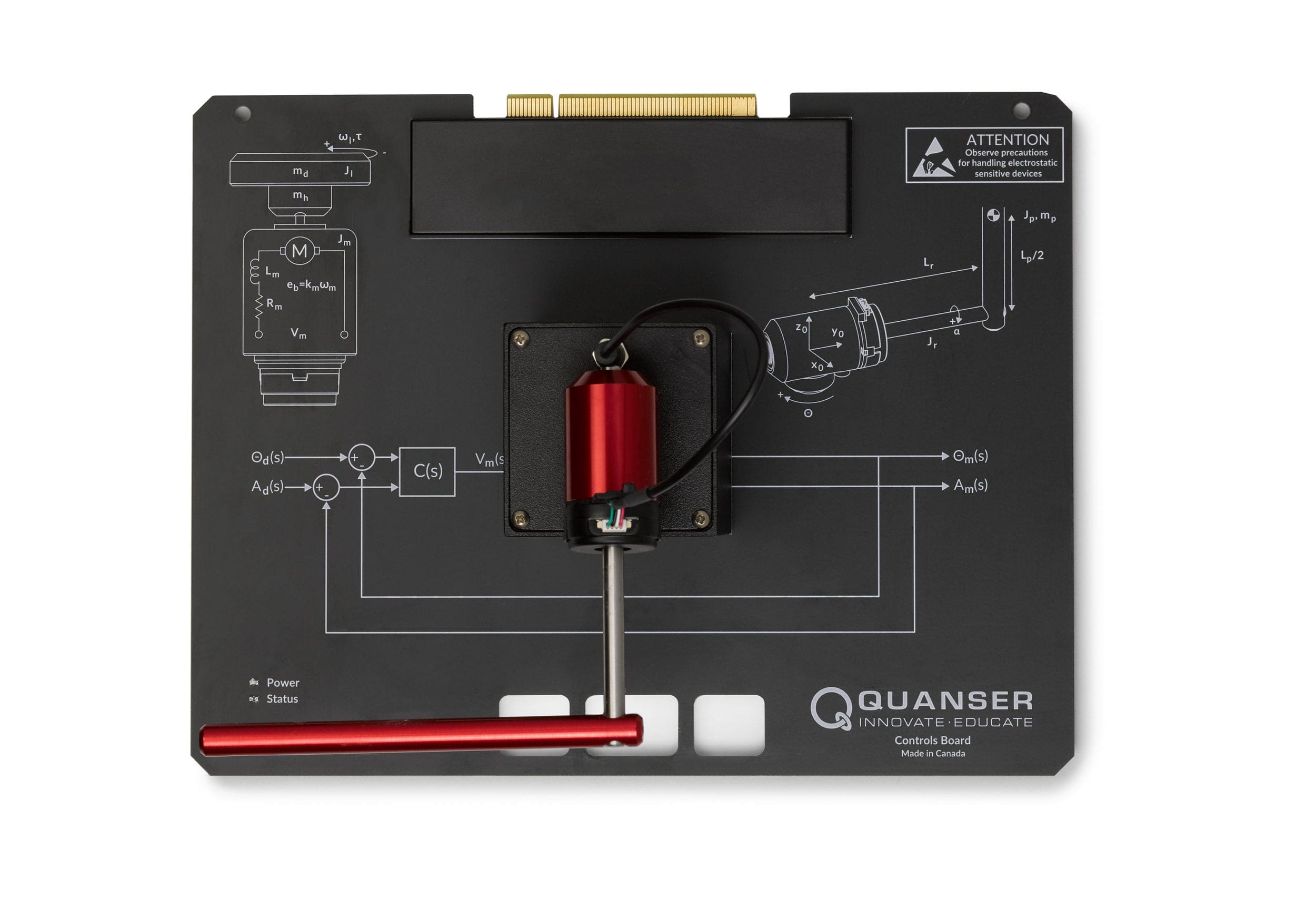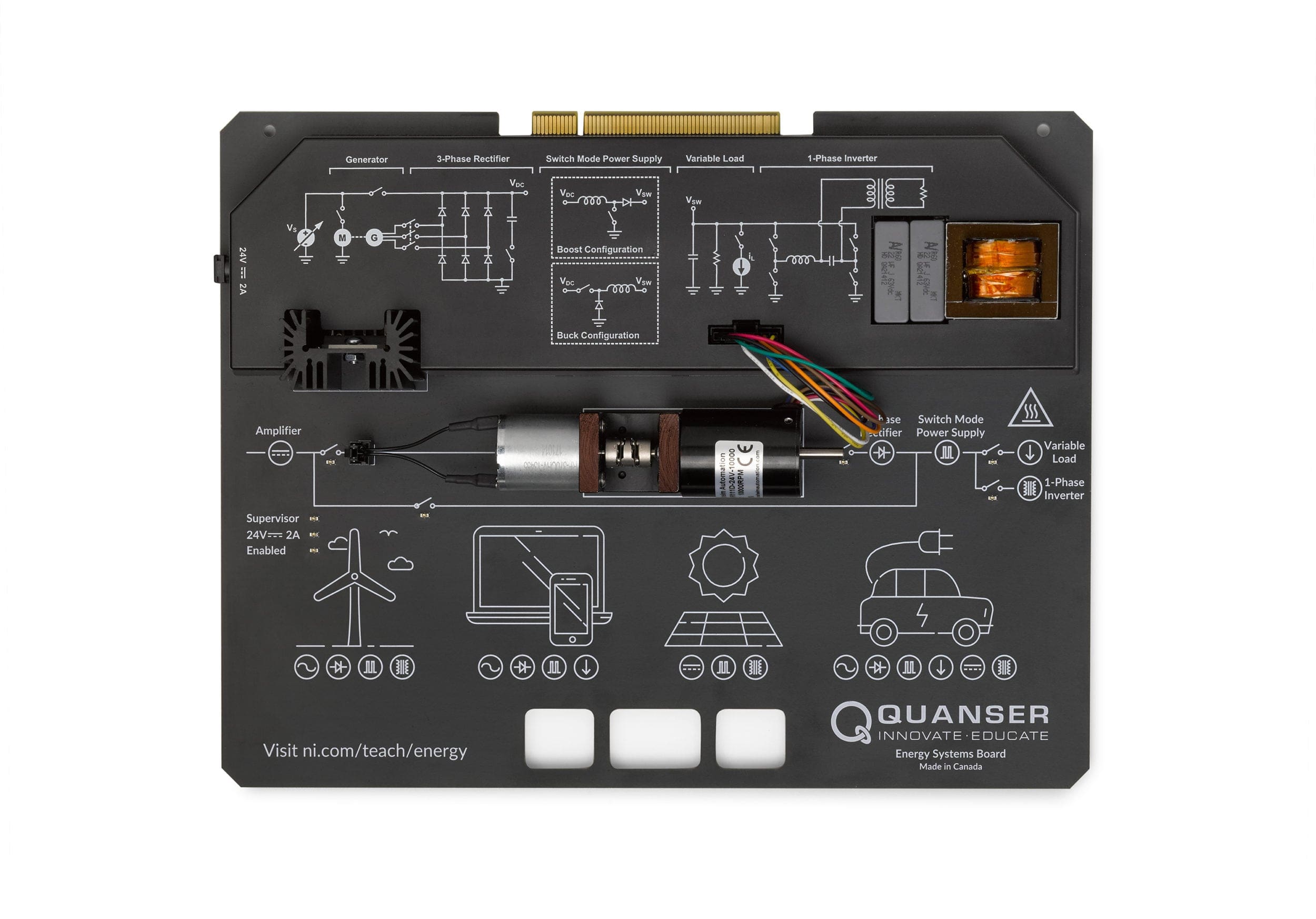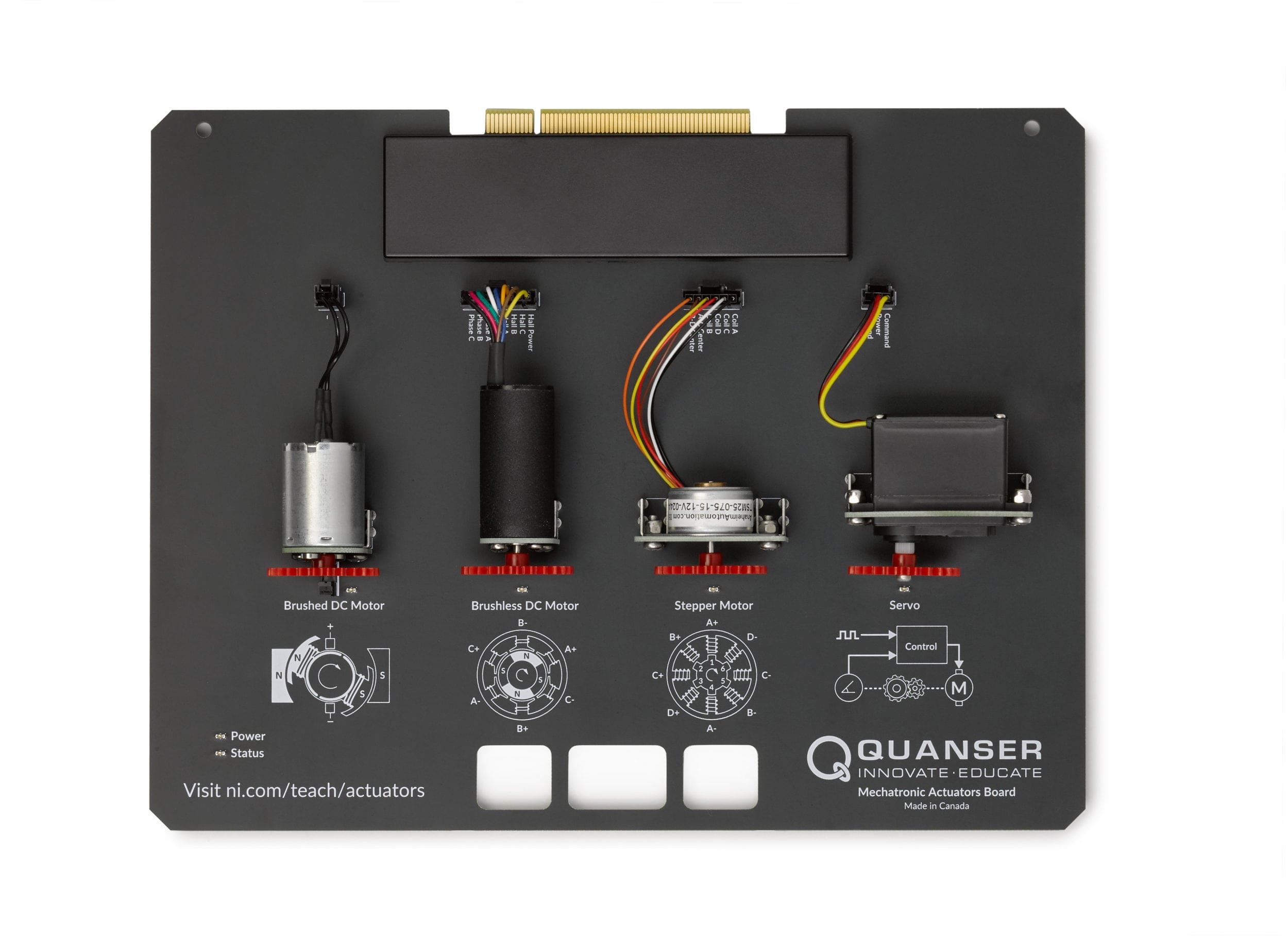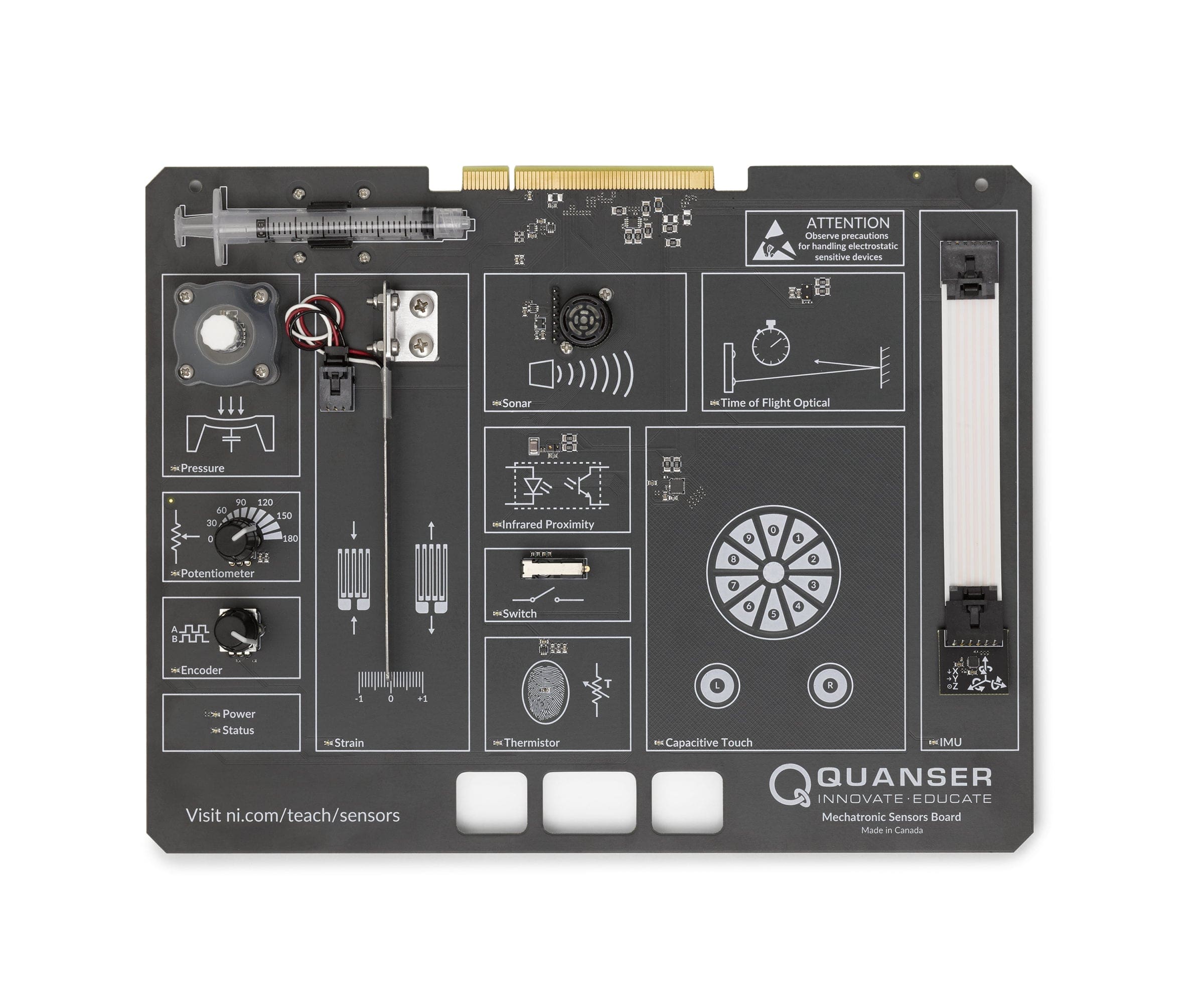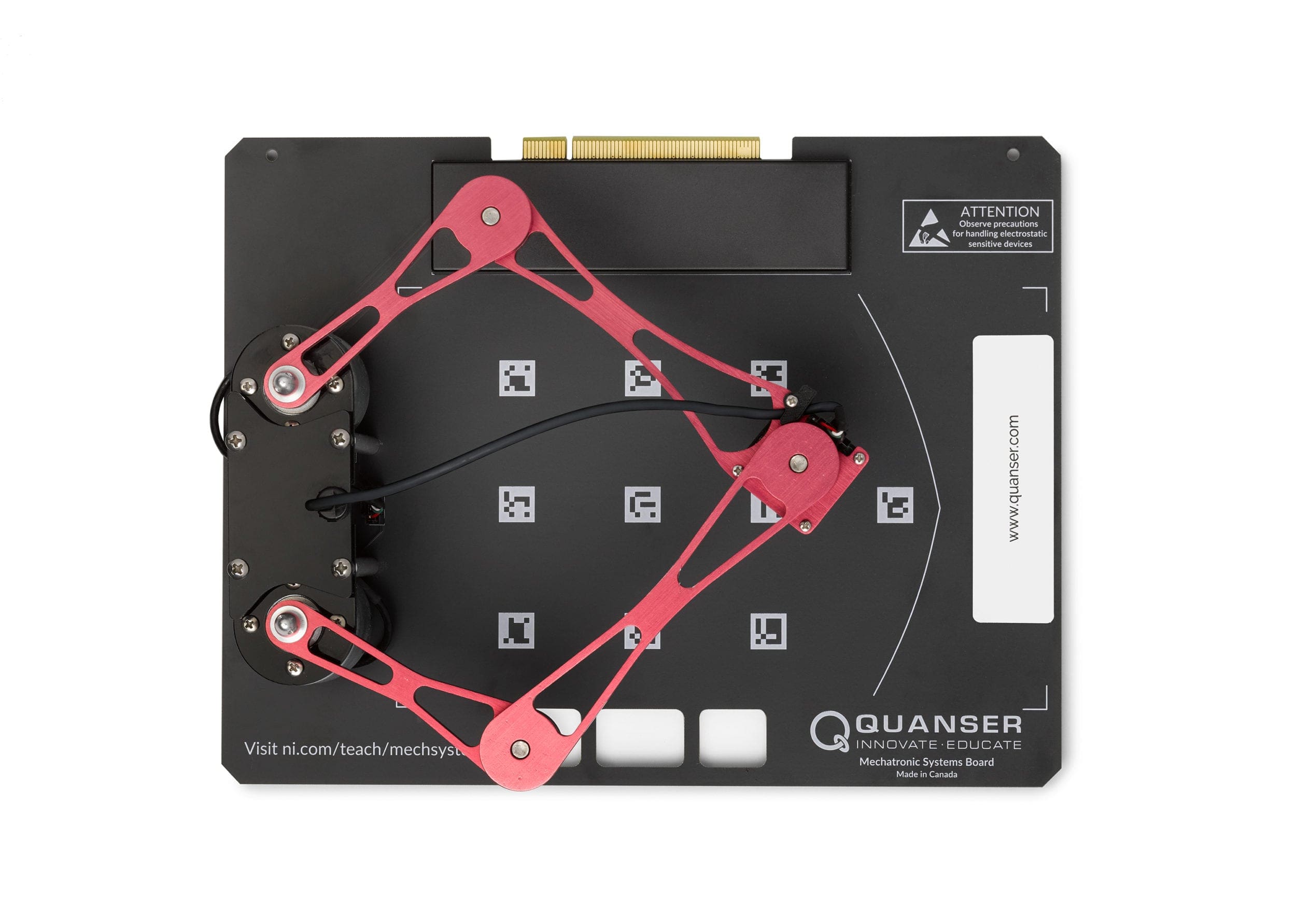QNET Mechatronic Actuators Board
This product is no longer available.
One of the topics covered in a typical introductory mechatronics course is understanding and application of actuators commonly used in modern mechatronic systems. The QNET Mechatronic Actuators board is an ideal tool to introduce hands-on a variety of actuators, and demonstrate their advantages, interfacing and operation, as well as design considerations and limitations. Designed exclusively for NI ELVIS platform and LabVIEW™ software, students learn principles of electromagnetic actuation, linear and PWM actuators, brushed and brushless DC motors, stepper motors and servos.
Product Details
The QNET Mechatronic Actuators board consists of a solenoid, two brushed DC motors, a brushless DC motor, an unipolar stepper motor, and a servo motor. One of the brushed DC motors is commanded through a linear power amplifier, the other is commanded by a PWM amplifier. The solenoid can be used to couple the two brushed DC motors. The brushless DC motor, stepper motor and servo motor are driven by a PWM amplifier. Current sense is used to read the current supplied to each of the motors, the angular position of the motors is measured by photomicrosensors.
| Brushed DC motor nominal input voltage | 24 V |
| Brushed DC motor nominal speed | 8700 rpm |
| Brushless DC motor nominal input voltage | 24 V |
| Brushless DC motor nominal speed | 4600 rpm |
| Stepper motor nominal input voltage | 5 V |
| Stepper motor steps in revolution | 24 |
| Servo motor nominal operating voltage | 4.8 V – 6 V |
| Servo motor nominal speed (no load) | 0.19 s/60º (4.8 V) – 0.15 s/60º (6 V) |
| Solenoid nominal operating voltage | 6 V |
| Number of solenoid coil turns | 1080 |
| Photomicrosensor typical rising and falling time | 4 µs |
| Photomicrosensor line count per revolution | 24 |
- Principles of electromagnetic actuation
- Magnetic fields of coiled conductors
- Implementation of electromagnetic field theory in solenoids
- Principles of linear and pulse width modulation (PWM) amplifiers
- Actuator dead-band measurement and compensation
- Linearity of an amplifier
- Principles of brushed and brushless DC motors
- Principles of stepper motors, their control and excitation modes
- Introduction to servo motor position control
The following additional components are required to complete your workstation, and are sold separately:
For LabVIEW
- NI ELVIS II+
